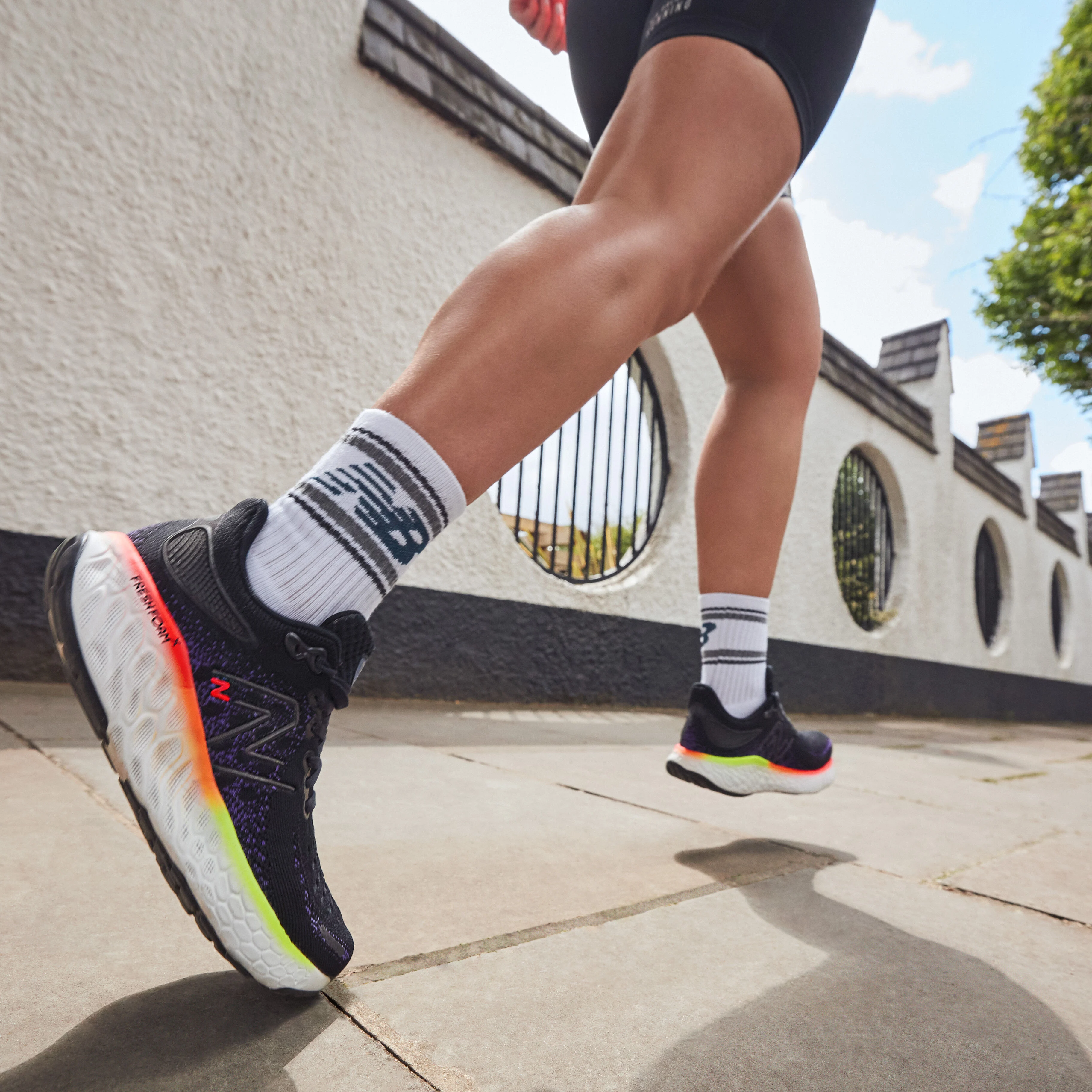
Health benefits of running
It’s no secret that running comes with tons of health benefits. This is thanks to the fact it’s a great form of aerobic, weight bearing exercise that engages a wide range of muscles including the glutes, hamstrings, calf muscles, hip flexors, quadriceps and core muscles. With all this in mind, it’s no surprise that running can:
• Strengthen your bones, muscles and joints
• Improve your cardiovascular fitness – that’s the rate at which the heart, lungs and blood vessels can deliver oxygen to the muscles
• Improve your mental health and keep the mind sharp
• Help with weight management
Health benefits of jogging
Jogging benefits largely align with the health benefits of running. This is because the two activities involve engaging the muscles, and both are a form of aerobic activity. So, just like running, jogging can help to strengthen your bones, muscles and joints, improve your cardiovascular fitness and mental health, and help with weight management.
Running vs jogging benefits
Let’s get down to it – does running have more health benefits than jogging or vice versa? Interestingly, some studies suggest jogging pips running to the post in terms of increasing life expectancy. This is thought to be because it’s a moderate intensity form of exercise that puts less stress on the cardiovascular system than running does. But things are far from clear-cut, and which form of exercise is ‘healthier’ is a widely debated topic. If one thing’s certain, running or jogging is better than doing no exercise at all, if we’re talking about health. But each activity has its own unique selling points. For example:
Jogging is lower impact than running – this can be helpful if you struggle with higher impact sports for any reason.
Running helps improve bone density – this is because it’s higher impact, which stimulates the bones to strengthen.
Jogging helps build endurance and burn fat – jogging is easier to maintain for a longer period of time than running, which helps build endurance levels. And exercising at a lower intensity for a longer period also means the body gets trained to burn fat for fuel.
Running burns calories more quickly – the higher intensity nature of running means you burn more calories faster than with jogging, which can be handy if you want a more impactful workout in less time.
Jogging puts less strain on your cardiovascular system – because it’s lower in intensity than running, jogging puts less demand on your heart.
Running increases your fitness levels more quickly – running requires more energy expenditure, which means pushing yourself harder. This, in turn, increases your fitness levels at a faster rate than less intense workouts like jogging.



Running vs jogging – pace
There’s no official cut-off point where a jog becomes a run. But the general consensus is that anything less than around six miles per hour is a jog, and anything over that is classed as running.
Average speed of jogging: The average jogging speed is about four to six mph.
Average speed of running: The average running speed is about six to eight mph, but this, of course, varies drastically from runner to runner, depending on fitness levels and ability. Some runners run much faster than this.
Jogging vs running shoes
While you’d benefit from different shoes for running and walking, there’s no real difference between running and jogging shoes. A bit like how you’d wear the same running joggers for your, well, jog – a good pair for running shoes will work just fine whether you’re going at four mph or eight mph. Essentially, whether you jog, run or do both, you’ll want to wear a pair of good quality running shoes that suits your individual needs. So, if you regularly take your sessions off road, you’d want some trail running shoes. Or, if you run or jog with overpronation, you’d want running shoes that offer plenty of stability.
In general, any shoe for running or jogging should be lightweight, durable and breathable with plenty of cushioning for comfort – something that’s especially important for longer distances.
While we’re talking about what gear you’ll need for a successful jog or run, be sure to check out our women’s and men’s running clothing for high-performance running tops, tights, jackets, shorts and more. men’s running clothing for high-performance running tops, tights, jackets, shorts and more.
Jogging vs running – which is better?
Whether jogging or running is the best option for you depends on a range of factors – from what your personal goals and objectives are to your fitness levels and – crucially – what you enjoy the most. As long as you’re working out in a way that feels good, isn’t causing you injury or harm, and feels sustainable – that’s all that really matters.
Jogging vs running for weight loss
When it comes to comparing jogging vs running for weight loss it might be tempting to go for running over jogging if you’re looking to lose weight, because it’s higher in intensity. But, while it’s true that running does burn calories faster than jogging, it’s also really important to consider that it’s easier to jog for longer periods. This could tip the scales in favour of jogging in terms of calories burned. For example, you may only be able to maintain a running pace for 10 minutes, but you might be able to jog consistently for around 25 minutes. In this case, you’d have burned more calories from your jog than from your run.
Of course, doing a mixture of running and jogging (called a fartlek run) could be an option, too. In fact, this can be a great way to gradually increase your fitness and endurance levels.
Finally, it’s also wise to think about what’s sustainable and suitable for you. For example, you’ll burn more calories overall if you jog four times a week for a month, than if you run four times in a week then take a few weeks off because you’ve overdone it and can’t face getting out again. Alternatively, if you’re always strapped for time and prefer to keep your workouts short – running might be a more realistic way to reach your goals.
Ultimately, whether you jog, run or mix things up through the week, the most important thing is that you enjoy your training sessions and move your body in a way that feels right for you. If you’re doing that – who’s to say that one type of exercise is better than another?



